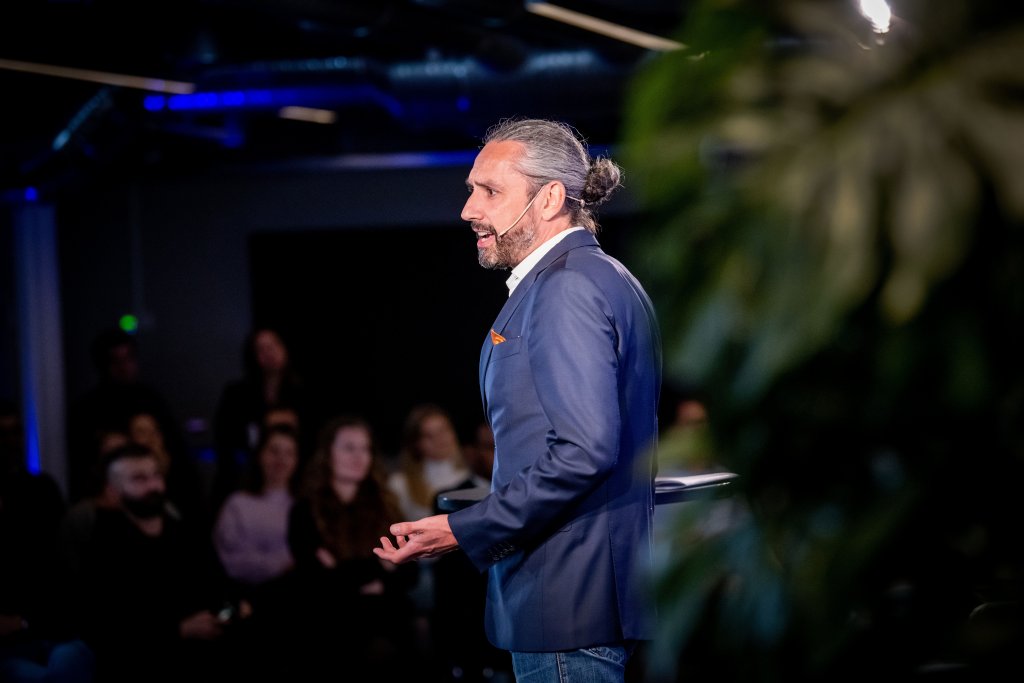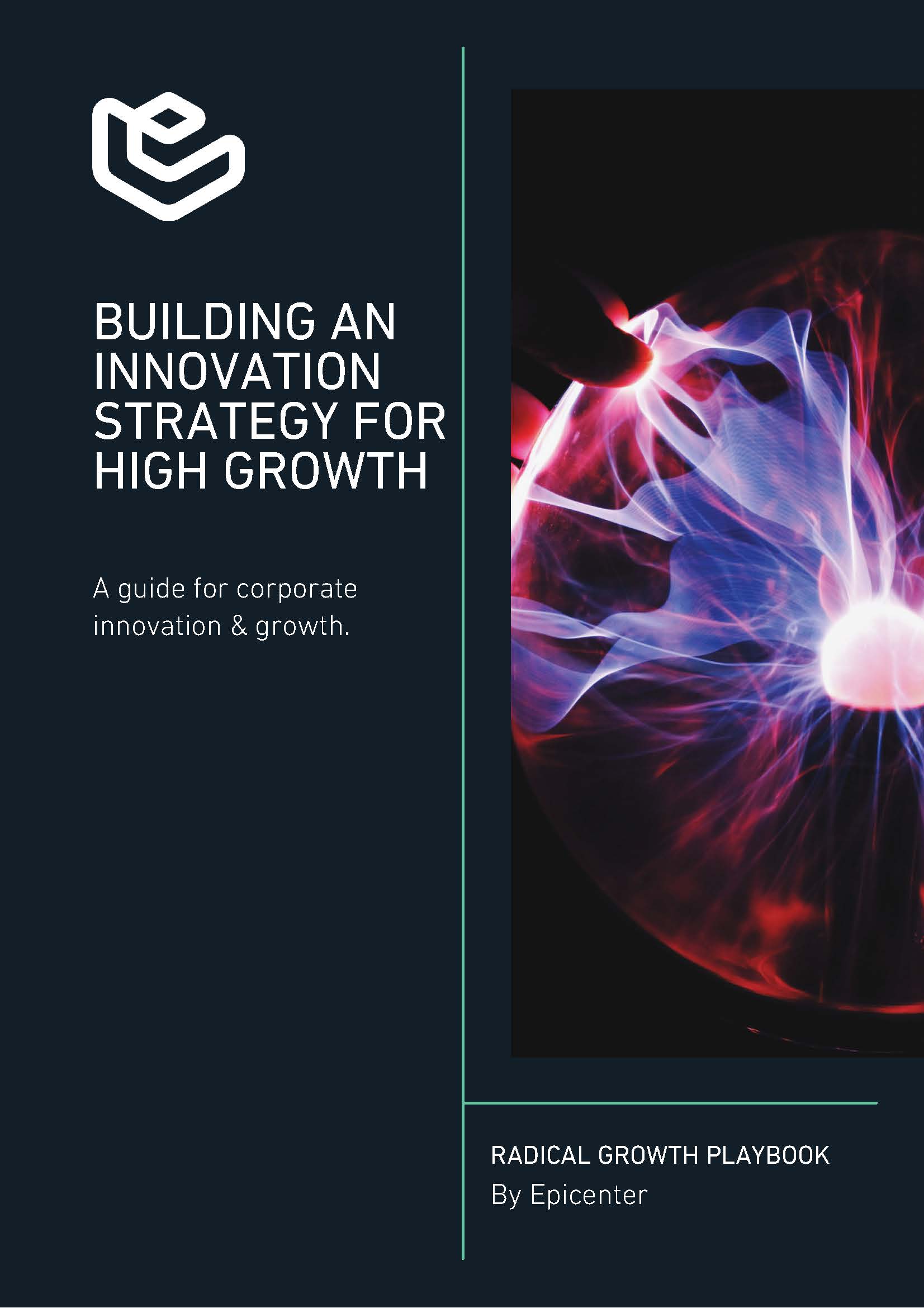Building an innovative culture for growth.
Building an innovative culture for growth.
An interview with Edgar Luczak, Head of Advisory at Epicenter.

Meet Edgar Luczak, Head of Advisory at Epicenter. Edgar has more than 25 years of experience in building companies and onlines businesses, both as an entrepreneur and through management consulting. As CEO of Garantum he grew his team from 15 to 250 people. At Epicenter, Edgar supports large corporations and scaleups with hands-on entrepreneur experience from building business and ventures, scaling faster, and growing internationally. It’s clear that Edgar has extensive experience in working with innovation and growth. In this interview we sat down with him to talk about why an innovative culture is crucial for a company’s future growth and how to kick-start that process as a company or team leader.
Edgar, could you tell us a bit about our background within innovation.
Throughout my life I’ve always built and developed things. I love the feeling when an idea takes shape and you take it to something real. From my experience I know that when working with innovation it is crucial that you build organizational culture on innovation and that it’s a natural part of the way your team, and the management, acts and thinks. An innovative culture is absolutely crucial for being a high-growth company.
When working with innovation the challenge most of us encounter is called your daily job. We are swamped with “musts”, things that have to be done and as leaders we therefore have to actively create space for creativity and innovation within the organization. That space is both a space of mind as well as a physical space to be creative from.
This is what we work with at Epicenter. It’s our job to energize, guide and create a place where you can meet other interesting people, get inspired, and get help by getting a sounding board or joining one of our Accelerate or Innovation programs.
How would you define an innovative culture?
There are so many exciting and advanced theories on what makes a culture innovative. I don’t think there is a simple answer to that question. However, with that said I can bring up a few things that have helped me when driving innovation as an executive, entrepreneur, and an intrapreneur.
The first one is the “soil” of innovation. What I mean by that is you have to make it possible to try things and not get punished for failure. You need to have mechanisms supporting how to develop and rest ideas, but also to know when to proceed, pivot or kill an initiative. Fail fast is not about failing, it’s about doing it fast before you burn your money on stupid things.
There needs to be time made available for elaborating, inventing and building things. Telling someone to be creative after hours does not work.
The second thing is the “personality” of the culture. Here I normally speak about Bravado, Hustle and Speed. You need to have guts, roll up your sleeves and get going now (not tomorrow). Together these things make sure you keep going and don’t give up. Innovation is not just an idea, it’s hard work that requires heart.
Why is an innovative culture so important?
Without exception, every company on this planet was spun out of some type of need that someone had an idea on how to fix something or create something new.
A lot of the companies that fail hang on to their old ideas and don’t renew themselves. So if you don’t have a culture that encourages innovation, at least somewhere in the organization, it’s just a matter of time before you will fail. Besides, where would you like to be a customer or employee? At a boring place or an innovative fun place?
In your experience, what are the most common challenges when working with innovation inside an organization?
I like to call it “the corporate immune system”. This is a major challenge for innovation. Simply because it kicks in automatically. The corporate immune system encompasses things such as “we have done it before and it didn’t work”, “it’s not in the budget”, “we have more important and urgent things to do than some petty innovation”, or “ there is time for this in 2025”.
There are a lot of other challenges, like, resources, money, decision process, and so on but I would say that the corporate immune system is the most important, and usually most common, issue to handle when building a truly innovative culture.
How do you start when you want to take on the challenge of changing your culture to become innovative?
I like to start with establishing clear objectives and challenges. Starting on corporate culture without understanding those two is meaningless. What do you want to achieve and what challenges stand in your way of getting there? Another important point is identifying the key values you want to promote and protect within your culture.
Lastly you need to right people to make it happen. They need to really understand and believe in the value of an innovative culture as well as have the right skills to carry it out to the entire organization.
Ok so the team is important, but who exactly should be involved in a company when building or changing a culture?
Everyone! One party pooper can spoil an entire party. Of course not everyone leads the change, but leaving people behind spoils the work invested.
I believe it is important to identify “carriers of culture”, people who are respected, liked and have the right attitude. People that are willing to stand up for the right values. They are you core team when changing the culture but in the end you need every single person within your organization to be on board.
If you could give a company or team leader three takeaways for building a healthy culture for innovation – what would they be?
One, start with listing your objectives and challenges – your why needs and what you need to overcome both have to be clear. Secondly you should structure your culture on the three values “bravado, hustle and speed” – be brave, work hard, and do it fast. And lastly, get the right people on board.
Download our Playbook on Innovation for Growth
Once you have submitted the form you will receive an email with a download link for the playbook.












